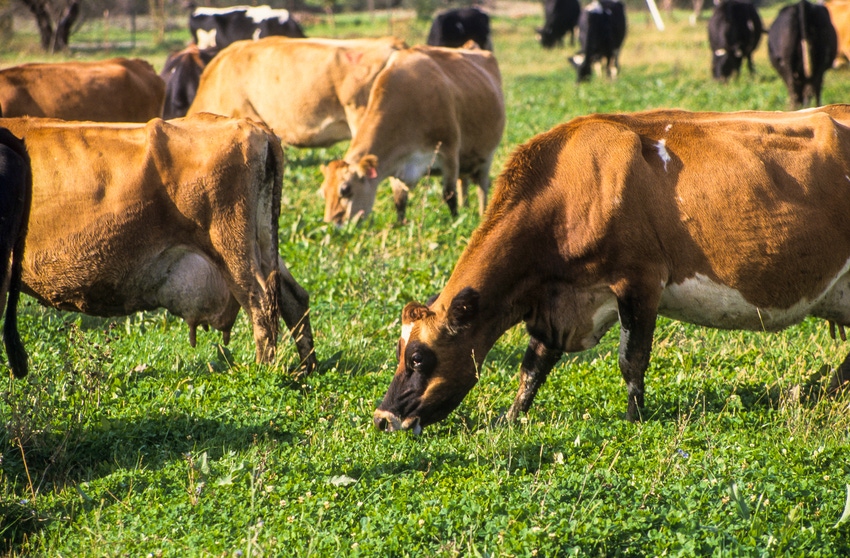April 24, 2017

A CoBank report says the current $21-per-hundredweight (cwt) gap in producer milk prices (organic vs. conventional) is evidence of growing consumer demand for organic products.
On-farm milk prices to conventional dairy producers currently hover around $15 cwt. This compares to the 12-month average for organic milk of over $36.
Authored by Ben Laine, CoBank’s senior economist for dairy processing and production, the report says organic milk is second only to eggs in terms of retail price premiums for organic.
As consumers feel more confident in the economy, CoBank believes organic sales will continue to improve as consumers are willing to pay more for food perceived to be safer and healthier. Conversely, any downturn in the economy could drive consumers back to favoring conventional dairy and other products as the price differential for the two categories is effectively double.
Organic milk was the top organic commodity sold in 2015, according to the report and currently accounts for about 21 percent of all organic sales.
The gap between organic and conventional milk spurred record-high transitions to organic and expansions of existing organic herds, the CoBank report says. This has its downfall as oversupplies of organic milk can lead it to being sold as conventional because the organic industry currently does not have the processing capacity its conventional brethren have.
Laine says organic milk is generally processed as a “segregated run” in conventional dairy facilities, meaning that organic milk is run separately from conventional milk only after the system has been cleaned and prepared for the organic process. This too has its issues as organic milk in a conventional plant is unable to capture the value of byproducts like cream, whey and other value-added ingredients, the report says.
CoBank reports the organic dairy industry has evolved from niche status, moving to a more mature market. This is happening as farms grow larger, transportation routes become more efficient and food companies position themselves with more organic brands. It’s also evidence of continued mergers and acquisitions within the food industry.
For instance, the report points to “particularly strong growth for organic lactose as an input to organic baby formula.”
Dairymen looking to jump at such an economic opportunity must understand that it takes a year to transition a dairy cow from conventional to organic, meaning she must eat only organic feed and be cared for following organic practices. Among these rules, organic cows cannot be given antibiotics.
Farmers looking to produce their own organic forages must understand that this transition period takes three years.
Because organic cows can never have antibiotics, dairy producers must manage herd health differently, or decide ahead of time that when antibiotics are necessary to prevent the undue suffering of an otherwise healthy and productive cow, she will need to be sold to a conventional dairy or be culled once the withdrawal period for the antibiotic has been met.
Other costs of organic production include the requirement for adequate pasture to graze cows at least 120 days of the year. This could be an issue for the confined animal operations common to California and Arizona conventional operations.
Aside from the price differential, the report says organic milk producers are paid on year-long contracts, making their cost-planning a bit more predictable than conventional dairy producers, who must weather monthly price swings common to federal or state milk marketing orders.
Perhaps that might be one “fix” for conventional dairymen complaining about volatile milk prices. If the organic industry can run a more market-based system that pays on year-long contracts, could the conventional industry do the same?
And, if the demand for organic milk continues to grow, it makes sense that opportunities for farmers looking to sell organic feed into organic markets may exist as those operations look to provide higher-quality feed inputs that could boost per-cow milk production to levels closer to those of non-organic cows.
You May Also Like




